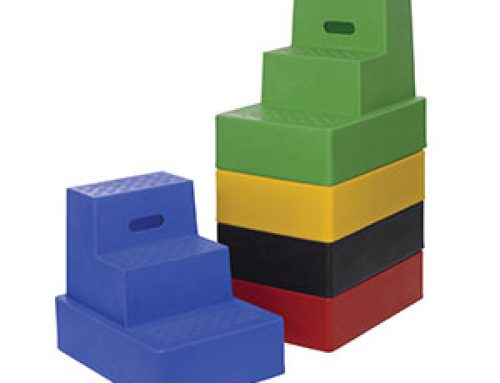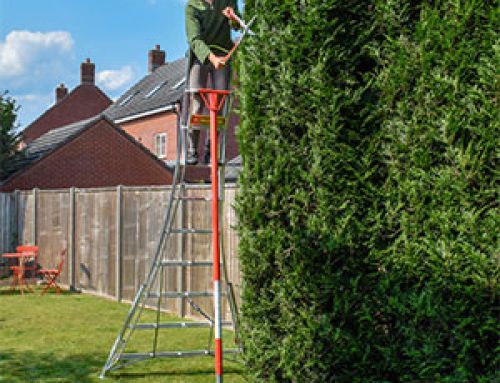The motif of a ladder is often used in art to symbolise ascension or journey – the Led Zeppelin classic Stairway to Heaven is just one instance where the phrase has inspired an artwork, more music or a poem. South African artist Strijdom van den Merwe created a piece with this title back in 2016, which was bought by a private collector after being on display in his homeland.
Van den Merwe has created a second edition of the sculpture, this time with a twist in the stairs (so it is not exactly the same as the original), which is kept at Creation Farm in the Hemel and Aarde Valley, SA. The re-issue was commissioned by the Nanhui Art Project of Taiwan before the pandemic, and van den Merwe had hoped to build the piece on site, but lockdowns put paid to that idea. Instead, the piece was made and shipped to the destination. It uses 50mm square steel tubing welded together, weighing in at over 240kg.
Stairway to Heaven is a striking piece of optical trickery which uses perspective to create the illusion of a staircase rising out and away into the sky. It needs to be viewed from the front to get the full effect, with the bottom three treads using the most masterful illusion to give them convincing depth.
It is located on a shoreline, allowing the horizon and the clear view to give the full effect of the perspective trick. As you walk around the sculpture, which offers a great photo opportunity if you can get the angles right, you are continually bamboozled by the angles in this Escher-eque trick of the eyes and mind.
From a perfect side angle, you see that there is no depth to the sculpture at all – the only depth comes from the 50mm of the construction material. Even when you realise it’s an illusion, the angles continue to make to you think there must be some lean to the piece right up until you’re perfectly side-on.
We don’t all have welding equipment and a huge workshop in which to make our own ladder illusions, but you can have a go at some optical ladder-based trickery at home with a pencil and a piece of card. You can use paper, but as part of the trompe l’oeil relies on a 90° crease, card gives you more stability.
First make a crease halfway across the piece of card, then use a ruler and a pencil to draw a guideline of 10cm that crosses the crease at the midpoint (so 5cm above and below of the crease). At the top and bottom of the line, use your ruler to mark a 2cm guideline, with the midpoint on the end of the line (1cm either side). You’ll end up with a capital I shape. Then draw another guideline of 5cm along the crease, with 2.5cm on either side of your initial guide line and mark this last line 2cm in from the end on the left.
Take your ruler again and draw a line from the left hand top cross-line to the end of the central line, and then from that point to end of the bottom cross-line. Next, draw a line from the top of the right hand cross-line to the marked point on the crease line, and from there to the right hand side of the bottom cross line. You’ll start to see that this could look like a shadow of something you’re about to draw on the right hand side.
On the right hand side, draw a line from the top cross-line to the end of the crease line and then to the end of the bottom cross line. Draw another line from the left side of the top cross-line to the central point, and then from there to the left hand side of the bottom cross-line. Fill in the lines on the right hand side with a pen to make them look bolder, and draw rungs between them.
Now rub out the top and bottom cross-lines, and shade what’s left to look like a shadow, continuing the bold rung lines across to the left to create the shadow effect. Fold along the crease to create a 90° angle and marvel at the appearance of a 3D ladder standing on the card.
If you enjoyed that, there are many tutorials online where you can learn to draw all sorts of optical illusions, including a ladder in a well, and some advanced graphical trickery that would make M.C. Escher proud.






Leave A Comment
You must be logged in to post a comment.